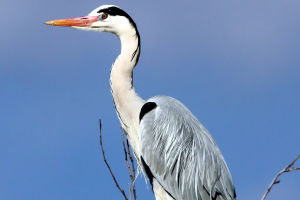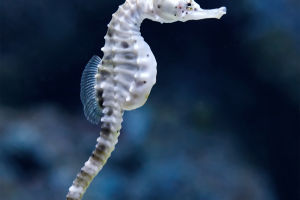Heron
Although the name of the heron is similar to that of the egret, the family, genus, living habits and distribution range are different.
Just looking at the face, the heron and the egret are still very similar. If the overall comparison is made, the size of the heron is significantly higher than that of the egret.
1. Morphological characteristics: The heron has a long mouth, neck and feet, and a slender body. The upper body is mainly gray, the head, neck and abdomen are white; the eyes and mouth are yellow; the legs are tan, and the claws are black.
The juveniles resemble adults, but the head and neck are thicker in gray, and the back is slightly embellished with brown.
2. Habitat environment: Herons inhabit the banks of rivers, streams and other waters and their shallow waters.
3. Living habits: Herons live in pairs and small groups, and gather in large groups during migration and winter. They are withdrawn, often wading alone in shallow water, or standing still by the water for a long time, and resting in groups on tall trees at night.
When the heron flies, the wings are agitated slowly, the neck is in a 'Z' shape, and the feet are stretched back and trailed far behind the tail.
Herons feed primarily on animal foods such as small fish, shrimp, frogs, lizards and insects, but their diet doesn't stop there.
The heron is very patient, it can stand motionless and wait for fish and shrimp for hours, so it is nicknamed "the long-necked old man". And once the prey appears, it stretches its neck and pecks it, as fast as lightning.
4. Distribution range: The heron has a wide distribution range and is a very common water bird in the wetlands of Eurasia and Africa. It is almost all over the country in China.
5. Breeding method: The breeding period of heron is from April to June. Male and female parent birds jointly build nests on trees or in reeds and aquatic grasses near the water.
The heron starts laying eggs immediately after the nest is completed, and the laying time starts from the beginning of May to the end of June. The newly laid eggs are brightly colored, blue-green, and gradually become sky blue or pale.
The hatching is shared by the male and female parent birds, and they are fed together after hatching.
5. Animal culture: In various works of art in ancient Egypt, especially in the visual arts of the New Kingdom period, Bennu is often presented as a heron, associated with the sun, creation and rebirth. In ancient Rome, the heron was a divination bird that gave omens by calling.
Do you know their fishing wisdom?
The way herons forage for food is peculiar. Whenever it gets hungry, it circles the swamp a few times, then stops on the shore to watch the water.
After observing for a while, flew into the grass to catch the insects and put them into the water, and then caught the insects and put them in the water again... Repeatedly, the fish gathered together and waited for the small insects that fell from the sky.
The heron flew to the shore and folded a straw, and then put it into the water as well. The fish mistakenly thought that the grass rod was snatched by small insects one after another.
Because the grass rod was too hard to swallow, more and more fish were vying for it. The heron sneaked into the water from the shore, aimed at a fish swimming past it, and quickly grabbed it and swallowed it.


